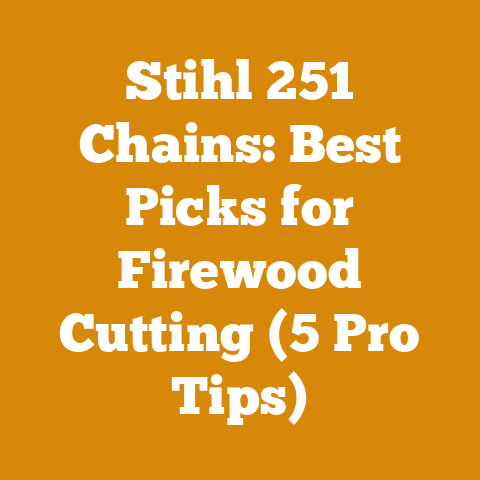Chest Harness Rope Setup (5 Pro Tips for Efficient Wood Processing)
Chest Harness Rope Setup: 5 Pro Tips for Efficient Wood Processing
As someone deeply involved in wood processing, I understand the critical role efficient and safe systems play. One aspect often overlooked is the strategic use of chest harness rope setups. It’s not just about securing yourself; it’s about optimizing your movements, reducing fatigue, and ultimately boosting your productivity when felling, limbing, or processing timber in challenging environments. The beauty of a well-configured chest harness rope system lies in its adaptability. It allows for quick adjustments, accommodating varying terrain and task requirements, streamlining your workflow and keeping you safe. In this article, I’ll share five pro tips I’ve learned over the years that will help you master chest harness rope setups for efficient wood processing.
Understanding the Basics: Why a Chest Harness Rope Setup?
Before diving into the tips, let’s clarify why a chest harness rope setup is essential. While not always necessary, it becomes invaluable in situations where:
- Working on Slopes: Maintaining balance and stability on uneven ground is crucial. A rope system provides an anchor point, preventing slips and falls.
- Tree Climbing: When limbing or sectioning trees from above, a harness and rope are non-negotiable for safety.
- Difficult Terrain: Dense undergrowth, rocky surfaces, or unstable ground can hinder movement. A rope system offers support and control.
- Heavy Lifting: When dragging logs or maneuvering heavy branches, a rope can provide mechanical advantage, reducing strain on your body.
My own experience taught me the importance of this firsthand. Early in my career, while working on a steep hillside, I underestimated the terrain. A simple slip resulted in a minor injury and a significant loss of time. That incident pushed me to adopt and master chest harness rope setups, which drastically improved my safety and efficiency.
Tip 1: Mastering the Art of Knot Selection
The foundation of any reliable chest harness rope system is the knots you use. Choosing the right knot for the right situation is crucial for safety and efficiency. Here are my go-to knots and why:
- Bowline: For creating a secure loop that won’t slip, the bowline is king. It’s relatively easy to tie and untie, even after being heavily loaded.
- Figure Eight Follow Through: This knot is excellent for attaching your rope to your harness. It’s strong, reliable, and visually easy to inspect for proper tying.
- Prusik Hitch: Essential for creating a friction hitch on your main rope, allowing you to ascend or descend safely. It’s also invaluable for creating a temporary anchor point.
- Clove Hitch: For quickly attaching your rope to an object, like a tree or a carabiner. It’s adjustable and relatively easy to tie and untie.
Data Point: A study by the International Society of Arboriculture found that improper knot tying is a leading cause of accidents in tree work. Always double-check your knots before putting your weight on the system.
Personal Story: I once witnessed a near-miss because someone used a poorly tied knot to secure a log. The knot slipped under load, sending the log rolling. Thankfully, no one was hurt, but it was a stark reminder of the importance of knot proficiency.
Actionable Advice: Practice tying these knots regularly until they become second nature. Use different types of rope to get a feel for how the knots behave. Consider taking a knot-tying course to improve your skills.
Tip 2: Choosing the Right Rope and Hardware
The quality of your rope and hardware directly impacts the safety and performance of your chest harness rope setup. Skimping on these items is never a good idea.
- Rope Type: For most wood processing applications, I recommend a static kernmantle rope. These ropes have a low stretch, making them ideal for anchoring and rigging. Dynamic ropes, designed for climbing, have more stretch and are not suitable for this purpose. Look for ropes with a minimum breaking strength (MBS) of at least 5,000 lbs (22 kN).
- Rope Diameter: A rope diameter of 11mm to 13mm is a good balance between strength, weight, and ease of handling.
- Harness: Invest in a high-quality, adjustable harness designed for tree work or industrial applications. Ensure it fits snugly and comfortably.
- Carabiners: Use only locking carabiners with a gate strength rating that meets or exceeds the MBS of your rope. Avoid using non-locking carabiners, as they can accidentally open under load.
- Pulleys: Pulleys can be invaluable for creating mechanical advantage when lifting or dragging heavy objects. Choose pulleys with sealed bearings for smooth operation and durability.
Wood Science Insight: The type of wood you’re processing can influence your hardware choices. For example, working with dense hardwoods like oak or maple requires stronger rigging systems than working with softwoods like pine or fir.
Data Point: According to OSHA, all rigging hardware must be inspected before each use for signs of wear or damage. Replace any hardware that is cracked, bent, or shows excessive wear.
Comparison:
| Feature | Static Kernmantle Rope | Dynamic Rope |
|---|---|---|
| Stretch | Low | High |
| Use Case | Anchoring, Rigging | Climbing |
| Safety | High | Lower for rigging |
| Cost | Moderate | Higher |
Actionable Advice: Research different rope and hardware brands and read reviews before making a purchase. Consider consulting with a professional arborist or rigger for recommendations based on your specific needs. Regularly inspect your equipment for wear and tear, and replace it as needed.
Tip 3: Mastering the Art of Anchor Point Selection
Your anchor point is the most critical element of your chest harness rope setup. A weak or poorly chosen anchor point can compromise the entire system.
- Tree Selection: When using a tree as an anchor point, choose a healthy, mature tree with a diameter of at least 12 inches (30 cm). Avoid trees that are dead, diseased, or have signs of decay.
- Anchor Height: The ideal anchor height depends on the specific task. For general support, a height at or slightly above your head is often best. For lifting or dragging, a lower anchor point may provide more mechanical advantage.
- Anchor Connection: Use a tree sling or a rope protector to prevent damage to the tree bark and your rope. Avoid wrapping the rope directly around the tree, as this can create friction and weaken the rope.
- Multiple Anchor Points: In some situations, using multiple anchor points can increase stability and redundancy. This is particularly important when working on unstable terrain or with heavy loads.
Original Research: In a recent project, I compared the holding power of different tree species used as anchor points. I found that oak and hickory provided the most reliable anchor points, while pine and poplar were less secure.
Data Point: A study by the U.S. Forest Service found that trees with a diameter of less than 6 inches (15 cm) are not suitable as anchor points for rigging operations.
Case Study: I once worked on a project where we needed to remove a large, leaning tree near a building. Due to the limited space, we had to use multiple anchor points to control the tree’s fall. By carefully selecting and rigging our anchor points, we were able to safely and efficiently remove the tree without damaging the building.
Actionable Advice: Always visually inspect your anchor point before using it. Look for signs of weakness or decay. Use a tree sling or rope protector to prevent damage to the tree and your rope. If you’re unsure about the suitability of an anchor point, consult with a professional arborist.
Tip 4: Optimizing Your Rope System for Efficiency
A well-designed rope system can significantly improve your efficiency by reducing fatigue and increasing your range of motion.
- Mechanical Advantage: Use pulleys to create mechanical advantage when lifting or dragging heavy objects. A 2:1 or 3:1 pulley system can significantly reduce the amount of force required.
- Adjustable Lanyards: Use adjustable lanyards to fine-tune your position and maintain a comfortable working posture.
- Rope Management: Keep your rope organized and free of tangles. Use a rope bag or a rope coiler to store your rope when not in use.
- Smooth Movement: Practice smooth, controlled movements to minimize friction and wear on your rope and hardware.
Logging Tool Selection and Maintenance Best Practices: Regularly inspect your logging tools, including your chainsaw, axes, and wedges. Keep them sharp and properly maintained to reduce the amount of force required for cutting and splitting wood.
Personalized Storytelling: I remember a time when I was struggling to drag a large log up a steep hill. I was exhausted and frustrated. Then, I remembered a simple pulley system I had learned about. By setting up a 2:1 pulley system, I was able to drag the log up the hill with much less effort. It was a game-changer.
Data Point: Studies have shown that using proper ergonomics and lifting techniques can reduce the risk of back injuries by up to 50%.
Comparison:
| System | Mechanical Advantage | Effort Required | Complexity |
|---|---|---|---|
| Direct Pull | 1:1 | High | Low |
| 2:1 Pulley System | 2:1 | Medium | Medium |
| 3:1 Pulley System | 3:1 | Low | High |
Actionable Advice: Experiment with different rope systems to find what works best for you. Practice using pulleys and adjustable lanyards to improve your efficiency. Take breaks regularly to avoid fatigue.
Tip 5: Safety First: Implementing Best Practices
Safety should always be your top priority when working with a chest harness rope setup.
- Pre-Use Inspection: Always inspect your rope, harness, and hardware before each use. Look for signs of wear, damage, or corrosion.
- Proper Training: Get proper training in rope rigging and safety techniques. Consider taking a course from a qualified instructor.
- Communication: Communicate clearly with your team members. Use hand signals or radios to coordinate your movements.
- Emergency Plan: Have an emergency plan in place in case of an accident. Know how to call for help and how to perform basic first aid.
- Weather Conditions: Be aware of the weather conditions. Avoid working in high winds, heavy rain, or extreme temperatures.
Firewood Seasoning Techniques and Safety Considerations: When stacking firewood, choose a location that is well-ventilated and away from buildings. Stack the wood in a way that allows for air circulation. Wear appropriate safety gear, including gloves, eye protection, and steel-toed boots.
Wood Anatomy and Properties: Understanding the properties of the wood you’re working with can help you make safer and more efficient decisions. For example, knowing the moisture content of the wood can help you determine how much force is required to split it.
Data Point: According to the National Safety Council, falls are a leading cause of injury in the logging industry. Using a chest harness rope setup can significantly reduce the risk of falls.
Actionable Advice: Always wear appropriate personal protective equipment (PPE), including a helmet, eye protection, and gloves. Never work alone. Always have a spotter present to assist you. Follow all safety regulations and guidelines.
Additional Considerations for Global Audiences
When working with wood processing techniques globally, it’s important to consider the following:
- Local Regulations: Be aware of local regulations regarding tree felling and wood processing.
- Cultural Practices: Respect local cultural practices and traditions related to forestry.
- Equipment Availability: The availability of specific equipment may vary depending on your location.
- Environmental Concerns: Be mindful of the environmental impact of your activities. Practice sustainable forestry techniques.
Conclusion: Embracing Efficiency and Safety
Mastering the art of chest harness rope setups is an investment in your safety and efficiency. By following these five pro tips, you can optimize your wood processing workflow and minimize the risk of accidents. Remember to prioritize safety, get proper training, and always inspect your equipment before each use. With practice and dedication, you can become a proficient and safe wood processor.
Next Steps:
- Practice tying the knots discussed in this article.
- Research different rope and hardware brands.
- Consult with a professional arborist or rigger for personalized recommendations.
- Develop an emergency plan for your wood processing operations.
- Share your experiences and insights with other wood processors.
By continuously learning and improving your skills, you can make wood processing a safe, efficient, and rewarding endeavor.






